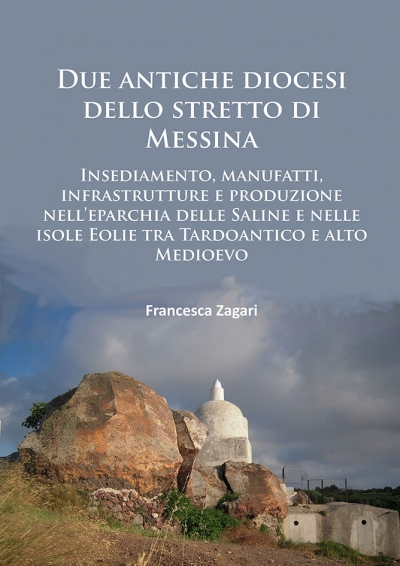Abstract
This monograph is a comparative study of the Saline area and of the Aeolian Islands dioceses’ settlement in Late Antiquity and in the Early Middle ages. Both regions overlook the Straits of Messina, between Calabria and Sicily. The idea of a comparative study came from the identification of many links between the Saline area and the Aeolian islands, starting with the fact of having the same bishop at the end of the 6th century.
Early monastic activities are documented in both areas and they are related primarily to urban settings. The episcopal cities of these zones were Tauriana – and from the mid-11th century Saint Agata – for the Saline area and Lipari for the Aeolian islands.
We have more precise and certain information about the shrines of Saint Fantinus at Tauriana and Saint Bartholomew at Lipari that appear to have had a great veneration. Both of them were built in the Southern suburbs of their respective cities, and they had a funerary connotation. Next to these churches there were monasteries dating back at least to the 8th century. The monks or nuns of these monasteries looked after the holy relics.
Written sources attest to the existence of the three forms of Italo-Greek monasticism in both areas: individual eremitism, eremitism of small groups and cenobitism. The Eparchy stands out in Italo-Greek monasticism, reaching its acme in the 9th and 10th centuries.
In the Eparchy of Saline there were independent (larger and smaller ones) and dependent monasteries (metochia). The latter were found in the mountainous interior (often near choria) and they had a manufacturing function. The book also evaluates data obtained through archaeological excavations in the shrine of Saint Fantinus at Tauriana (and monasteries associated) and in the monastery of Saint Marina at Delianuova, probably the first metochion that has been excavated in Italy.
Although in the Archipelago monasteries were also attested, Aeolian monasticism seems to be characterized mainly by hermits who decided to cut themselves off from civilization, living on small islands with active volcanoes which were considered to be the gates of Hell. At the beginning of the 9th century monks of Studion were exiled to the island of Lipari by the emperor because of their resistance to iconoclasm.


